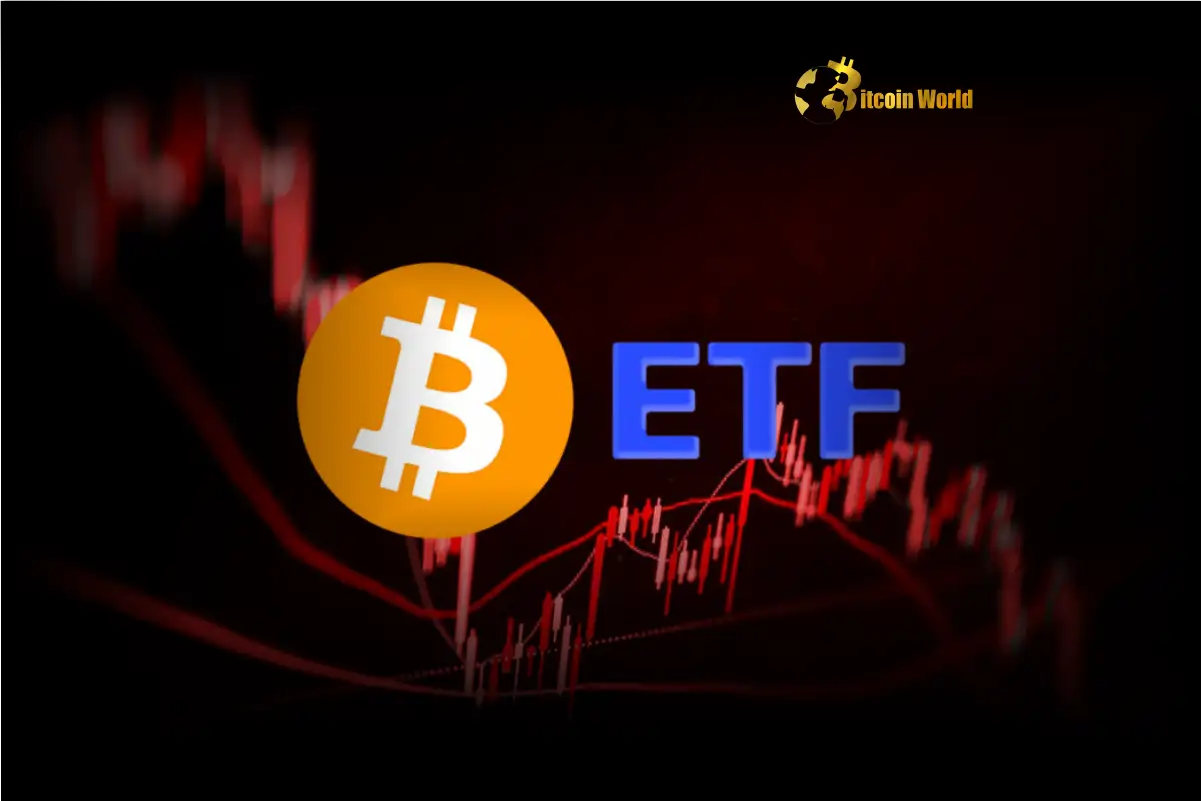Hold onto your hats, crypto enthusiasts! The first quarter of 2025 has delivered some truly astonishing figures from an unexpected corner of the digital currency world. Applications built on Coinbase’s Ethereum layer-2 network, Base, have reportedly raked in a staggering $193.4 million in fees! Yes, you read that right – nearly two hundred million dollars in just three months. This news, initially highlighted by Unfolded on X, has sent ripples of excitement and curiosity throughout the crypto community. But what does this mean for the future of Base, Ethereum, and the broader landscape of decentralized applications (dApps)? Let’s dive into the details and uncover the story behind these impressive numbers.
What are Base Apps and Why are They Booming?
To understand this surge in fees, it’s crucial to first grasp what Base Apps are and why they’re suddenly in the spotlight. Base is Coinbase’s foray into the world of Ethereum layer-2 scaling solutions. Essentially, it’s a network built on top of Ethereum, designed to make transactions faster and cheaper. Think of it as an express lane for Ethereum transactions. This is particularly important because as Ethereum’s popularity grew, so did its transaction fees and processing times, sometimes making it expensive and slow for everyday users to interact with dApps.
Why the boom? Several factors contribute to the success of Base Apps:
- Coinbase’s Backing: Being incubated by a crypto giant like Coinbase gives Base instant credibility and access to a massive user base.
- Lower Fees: Layer-2 networks inherently offer significantly lower transaction fees compared to the Ethereum mainnet, making them attractive for users and developers alike.
- Faster Transactions: Base offers quicker transaction processing, improving the user experience for dApps.
- Developer-Friendly Environment: Base is designed to be developer-friendly, encouraging the creation and deployment of a wide range of applications.
- Growing DeFi and NFT Ecosystem: The rise of decentralized finance (DeFi) and non-fungible tokens (NFTs) on Base has attracted users and driven transaction volume, consequently increasing fees.
The combination of these factors has created a fertile ground for Base Apps to flourish, leading to the impressive fee generation we’re witnessing.
Coinbase Base: The Layer-2 Network Powering the Growth
Coinbase Base isn’t just another layer-2 network; it’s strategically positioned to bridge the gap between the centralized world of Coinbase and the decentralized realm of Ethereum. It aims to onboard the next billion users to crypto by providing a secure, low-cost, and developer-friendly environment. Let’s break down why Coinbase’s involvement is a game-changer:
Key Aspects of Coinbase Base:
- Security: While being a layer-2 solution, Base inherits the security of the underlying Ethereum network. Coinbase’s reputation for security further adds to user confidence.
- Scalability: As a Layer-2 Network, Base significantly enhances Ethereum’s scalability, processing more transactions per second and reducing congestion.
- Integration with Coinbase Products: Seamless integration with Coinbase’s existing products and services provides a smooth on-ramp for users to access Base Apps.
- Open-Source and Permissionless: Base is designed to be open-source and permissionless over time, fostering decentralization and community involvement.
The success of Coinbase Base in generating substantial fees underscores the growing demand for scalable and cost-effective Ethereum solutions. It highlights the strategic importance of layer-2 networks in the broader crypto ecosystem.
Decoding the $193.4 Million Crypto Fees: Where is the Value Coming From?
A whopping $193.4 million in Crypto Fees in just one quarter – it’s a number that demands attention. But where is this value actually coming from? Understanding the sources of these fees is crucial to assessing the sustainability and future potential of Base Apps.
Sources of Fee Generation:
- Transaction Fees: A significant portion comes from users paying transaction fees to use dApps on Base. Every swap, trade, NFT mint, or interaction incurs a small fee.
- Decentralized Exchanges (DEXs): DEXs like Uniswap and SushiSwap deployed on Base contribute heavily to fee generation through trading activities.
- NFT Marketplaces: The buying, selling, and minting of NFTs on Base marketplaces also generate substantial fees.
- DeFi Protocols: Lending, borrowing, and staking activities within DeFi protocols on Base add to the overall fee volume.
- Bridge Transactions: Users bridging assets between Ethereum mainnet and Base also contribute to fees.
To put this into perspective, $193.4 million in quarterly fees is a significant milestone for a relatively new Layer-2 Network. It indicates strong user adoption and robust activity within the Base ecosystem. This revenue can be reinvested into the network’s development, security, and further growth, creating a positive feedback loop.
Ethereum L2 Scaling and the Future of Base
The rise of Base is intrinsically linked to the broader narrative of Ethereum L2 scaling. Ethereum, despite being the leading smart contract platform, has faced scalability challenges. Layer-2 solutions like Base are designed to address these limitations and unlock Ethereum’s full potential. What does this mean for the future?
The Role of Ethereum L2s:
- Scalability Solution: Ethereum L2 networks are pivotal in scaling Ethereum, enabling it to handle a much larger volume of transactions.
- Reduced Gas Fees: They drastically reduce gas fees, making Ethereum accessible to a wider range of users and applications.
- Improved User Experience: Faster transaction speeds and lower costs lead to a significantly better user experience for dApps.
- Catalyst for Mass Adoption: By overcoming scalability hurdles, Ethereum L2 solutions pave the way for mass adoption of blockchain technology.
Base, as a prominent Ethereum L2, is at the forefront of this scaling revolution. Its success in fee generation is a testament to the growing demand for these solutions and their crucial role in the future of Ethereum and the entire crypto space. As the ecosystem matures and more applications are built on Base, we can expect to see even greater adoption and potentially higher fee volumes.
Benefits and Challenges of Building on Base
For developers and users considering Base, it’s essential to weigh both the benefits and challenges. While the $193.4 million fee figure is enticing, a balanced perspective is crucial.
Benefits of Base:
- Low Transaction Fees: Significantly cheaper than Ethereum mainnet, making it ideal for high-volume applications.
- Fast Transaction Speeds: Offers quicker transaction processing, improving user experience.
- Coinbase Ecosystem Integration: Seamless integration with Coinbase products and user base.
- Developer-Friendly Tools: Provides robust developer tools and resources.
- Growing Ecosystem: Rapidly expanding ecosystem with increasing dApps and users.
Challenges of Base:
- Relatively New Network: As a newer network, it may still be undergoing development and refinement.
- Centralization Concerns: While aiming for decentralization, Coinbase’s involvement raises some centralization questions.
- Competition from Other L2s: The Ethereum L2 landscape is competitive, with networks like Arbitrum, Optimism, and zkSync also vying for market share.
- Dependency on Ethereum: Base’s security and functionality are ultimately dependent on the Ethereum network.
Despite these challenges, the benefits of Base, particularly its low fees and Coinbase backing, make it a compelling platform for many developers and users. The impressive $193.4 million in fees is a strong indicator of its growing momentum and potential.
Conclusion: Base’s Meteoric Rise Signals a Bright Future for Ethereum Scaling
The $193.4 million in fees generated by Base Apps in Q1 2025 is not just a number; it’s a powerful signal. It signifies the burgeoning success of Coinbase’s Layer-2 Network, the increasing demand for scalable Ethereum solutions, and the vibrant activity within the Base Apps ecosystem. This astonishing figure underscores the critical role of Ethereum L2 networks in paving the way for wider crypto adoption and a more efficient, user-friendly decentralized future. As Base continues to evolve and attract more developers and users, we can anticipate even greater milestones and a lasting impact on the crypto landscape. The future of Base Apps and Ethereum L2 scaling looks incredibly bright, promising a new era of accessibility and innovation in the world of digital currencies.
To learn more about the latest crypto market trends, explore our article on key developments shaping Ethereum price action.
[ad_2]
Source link






